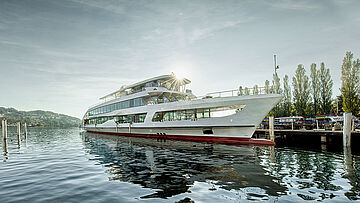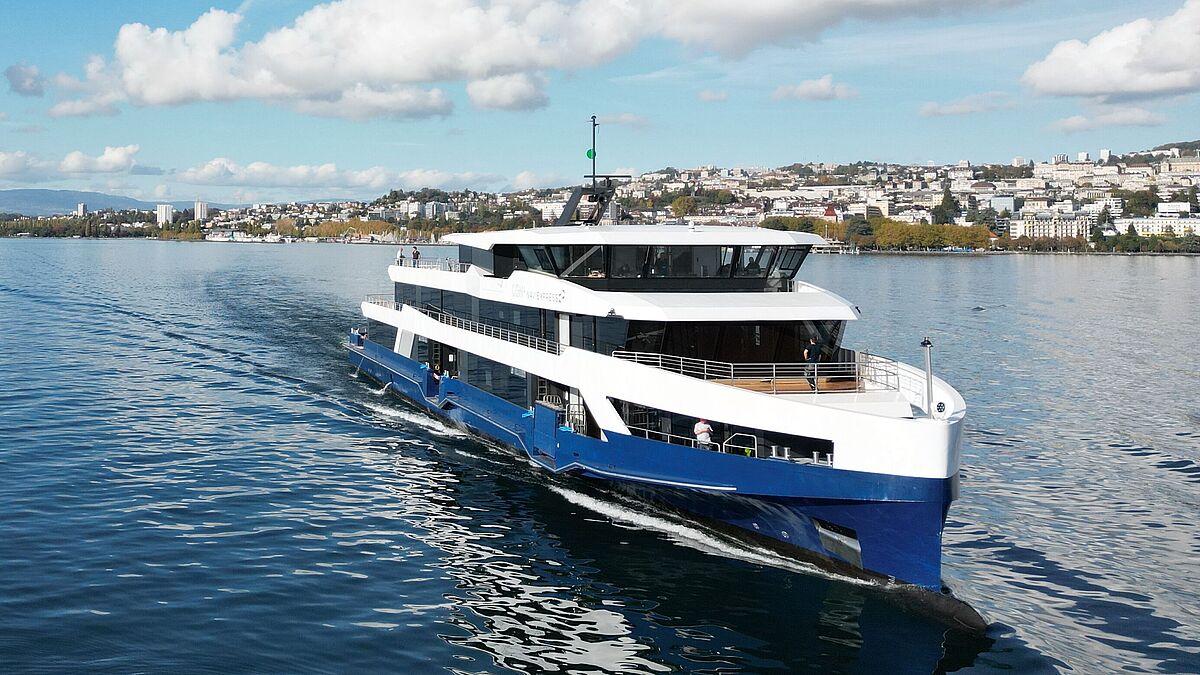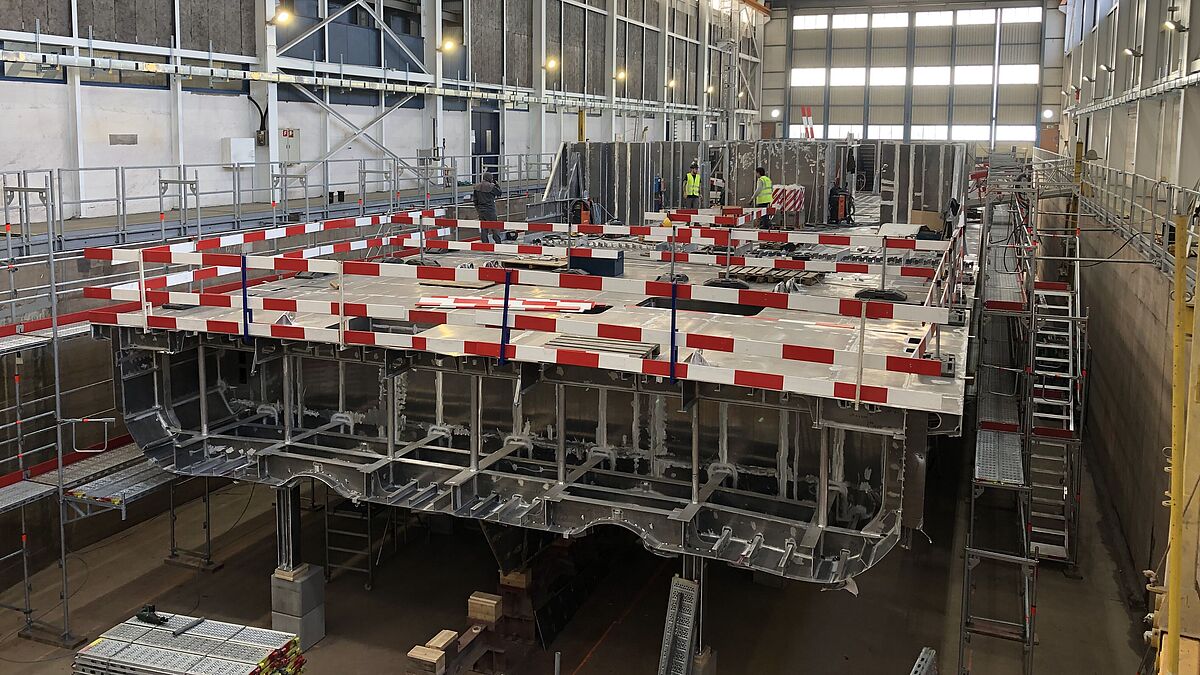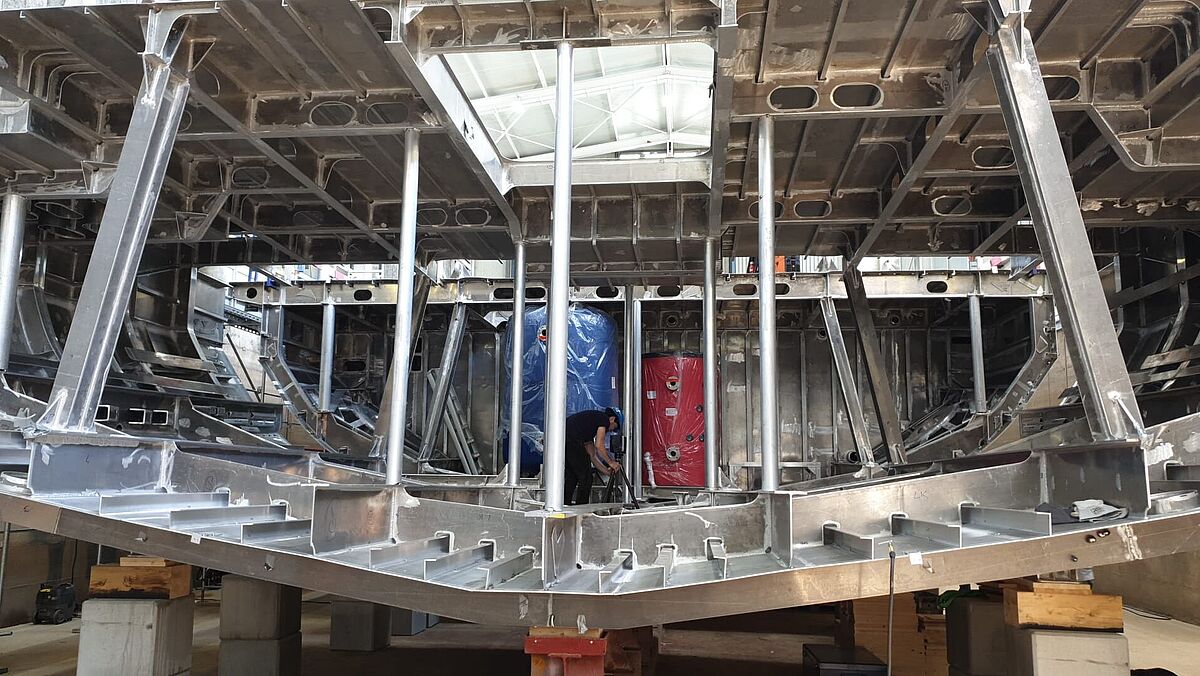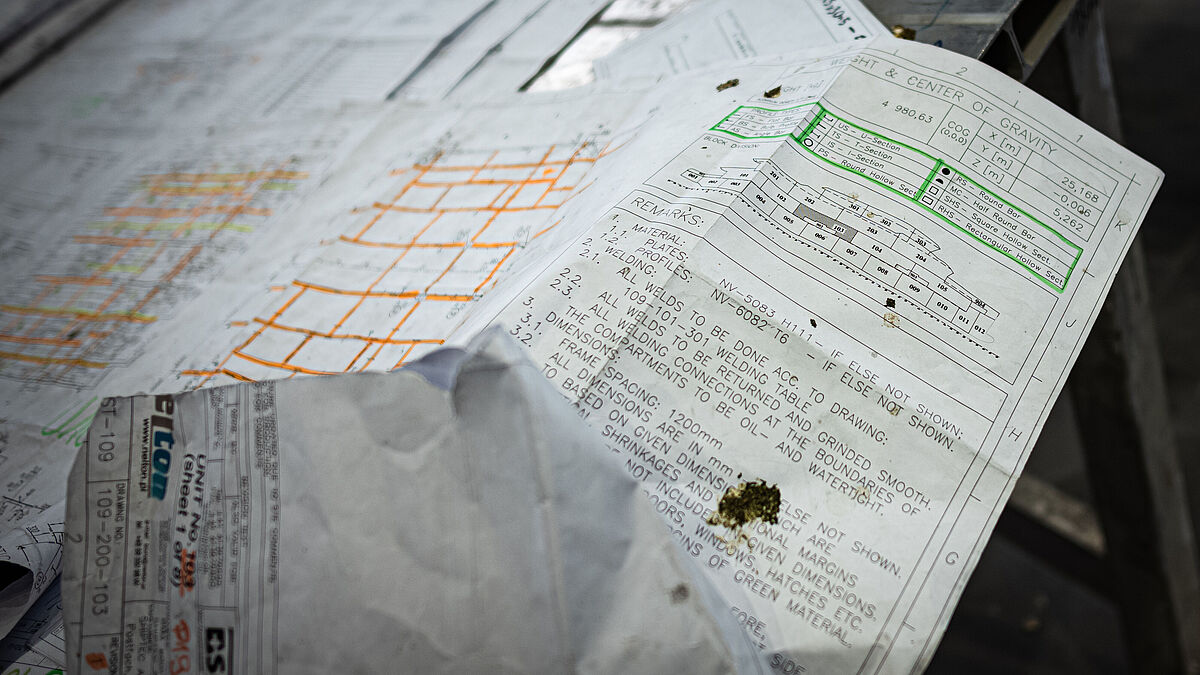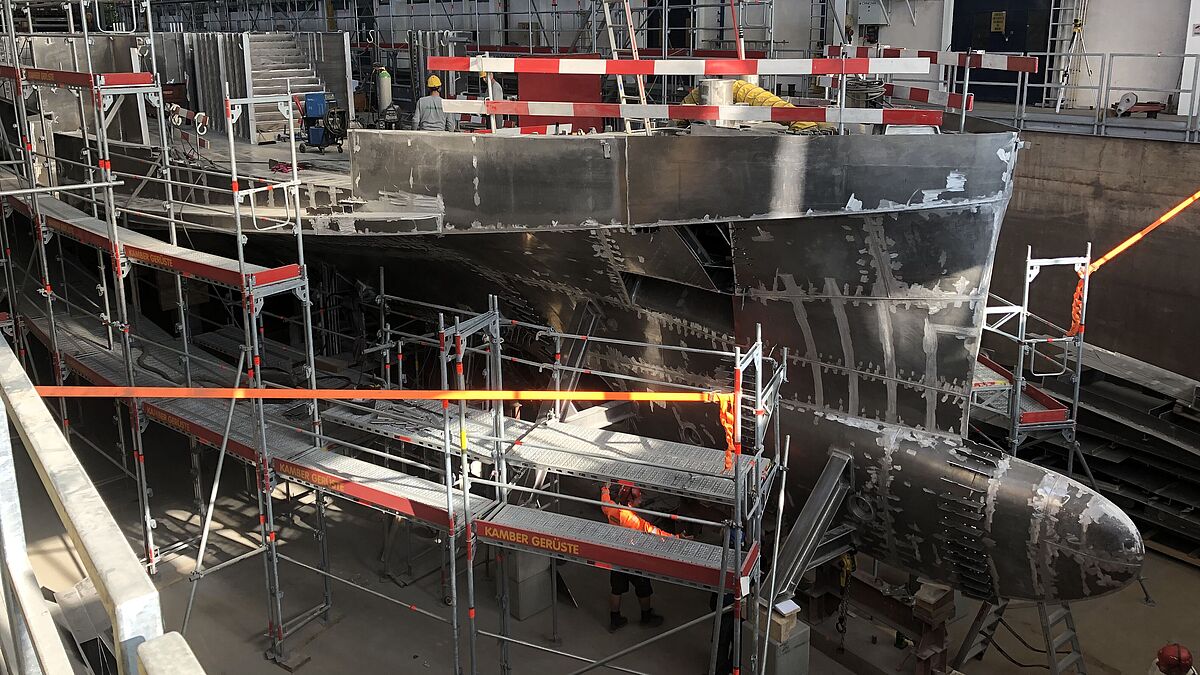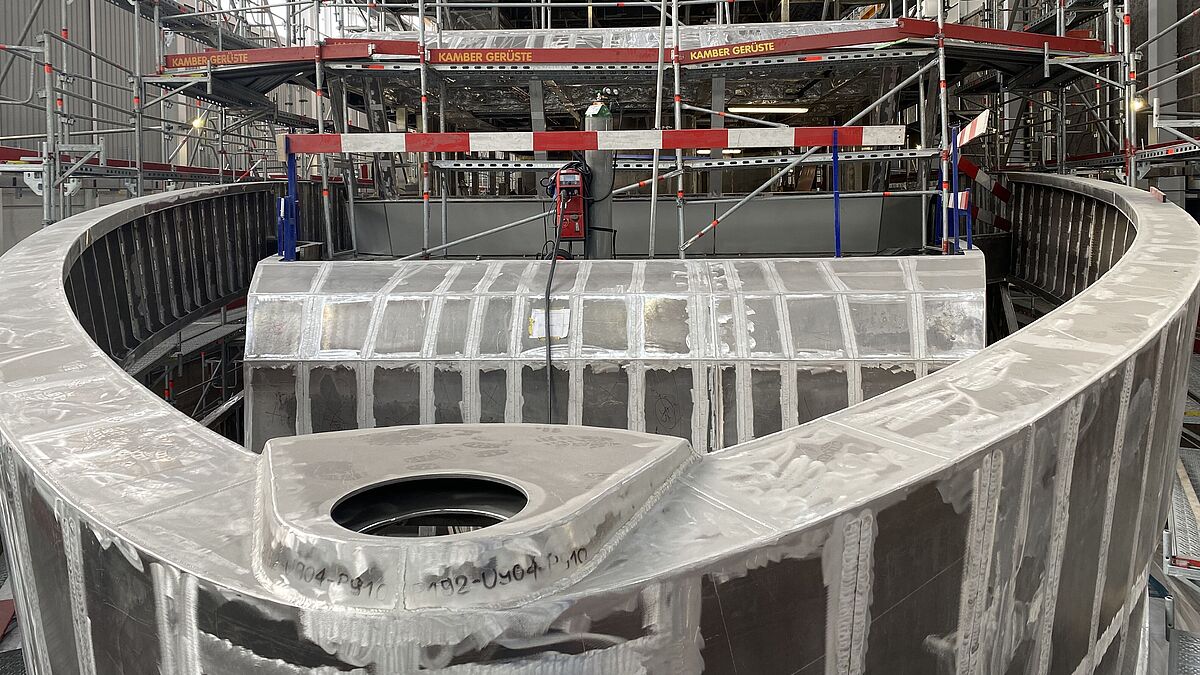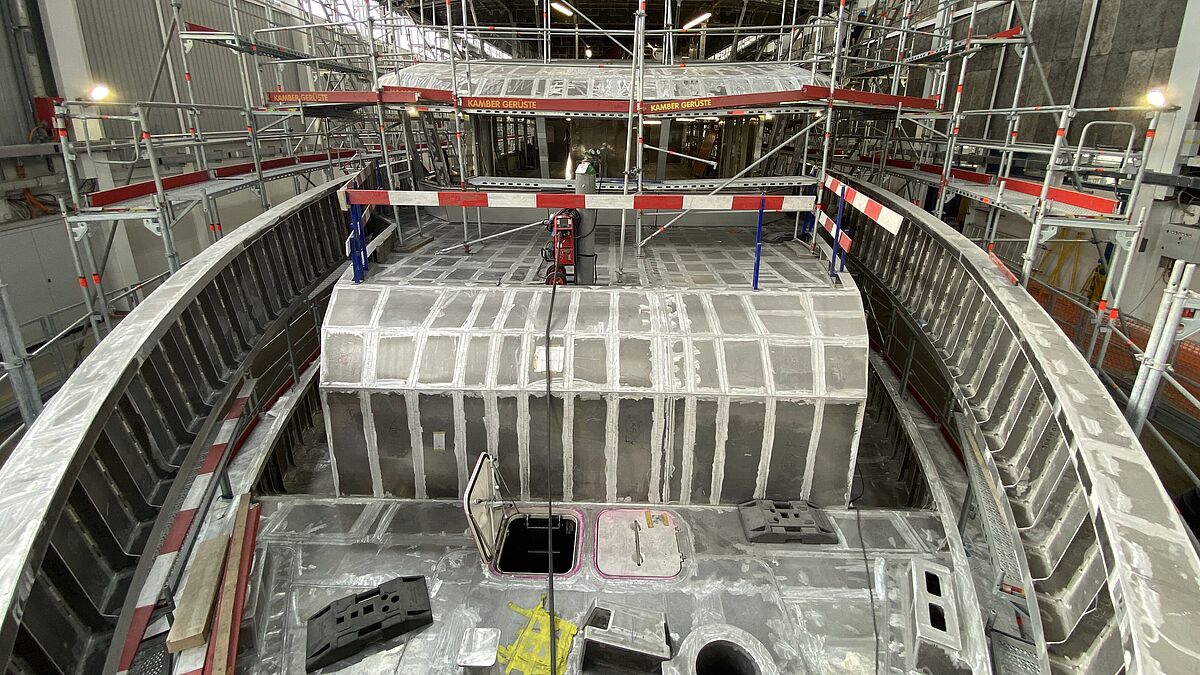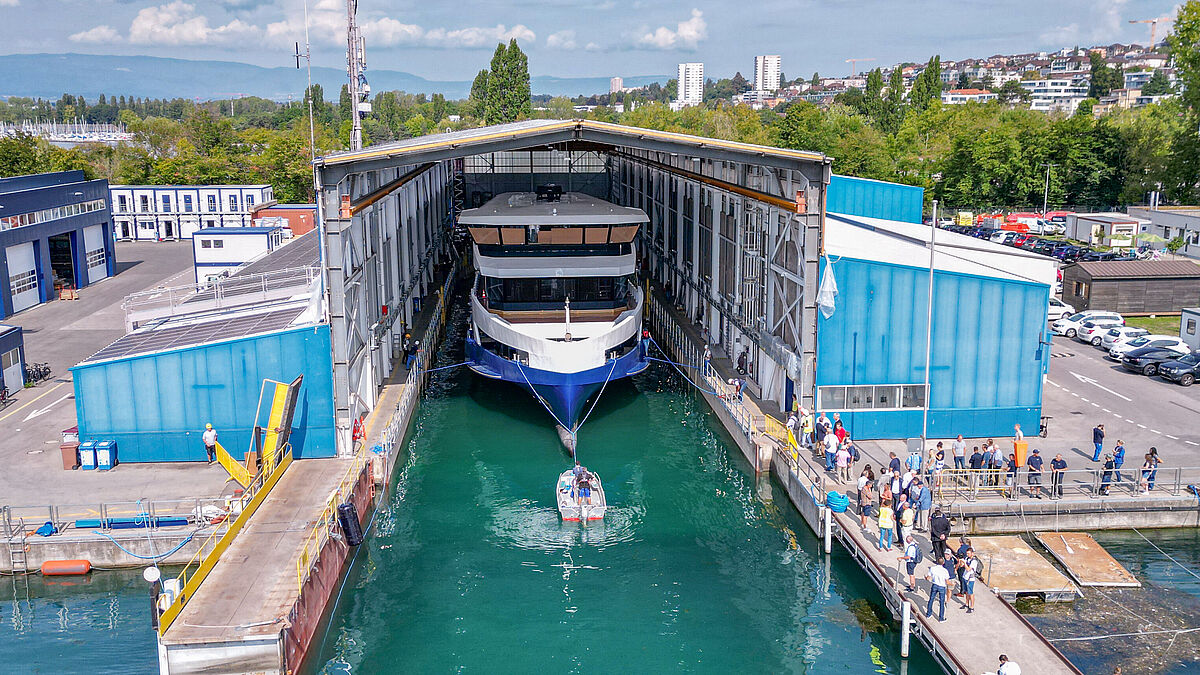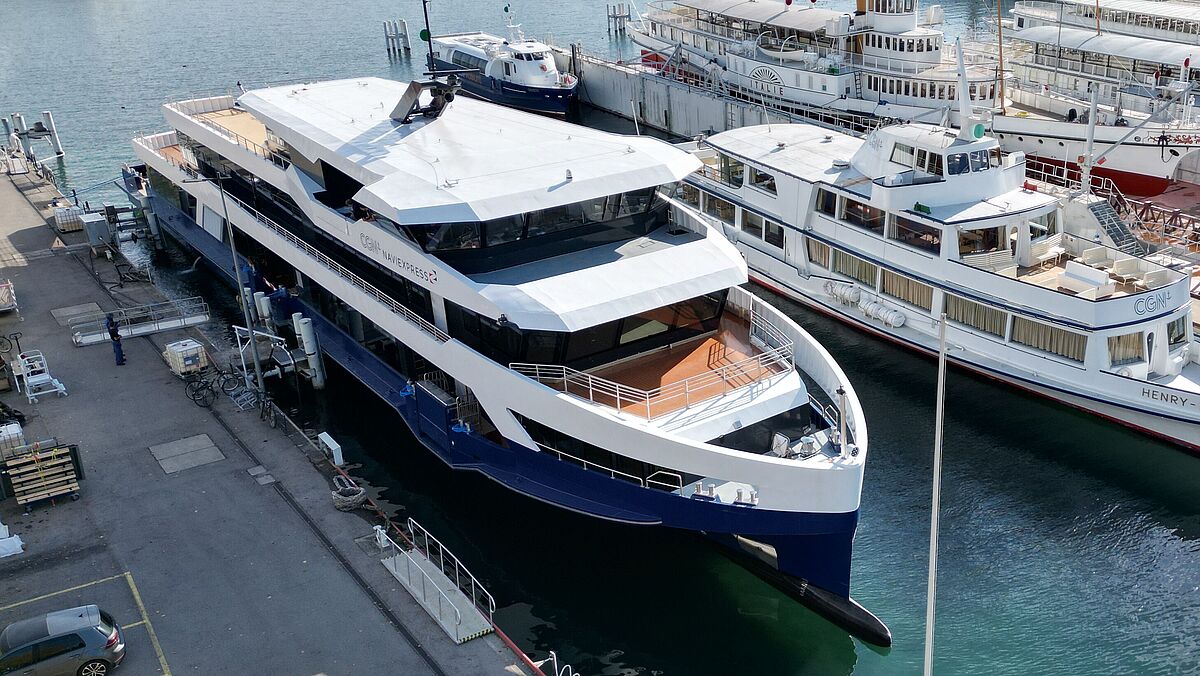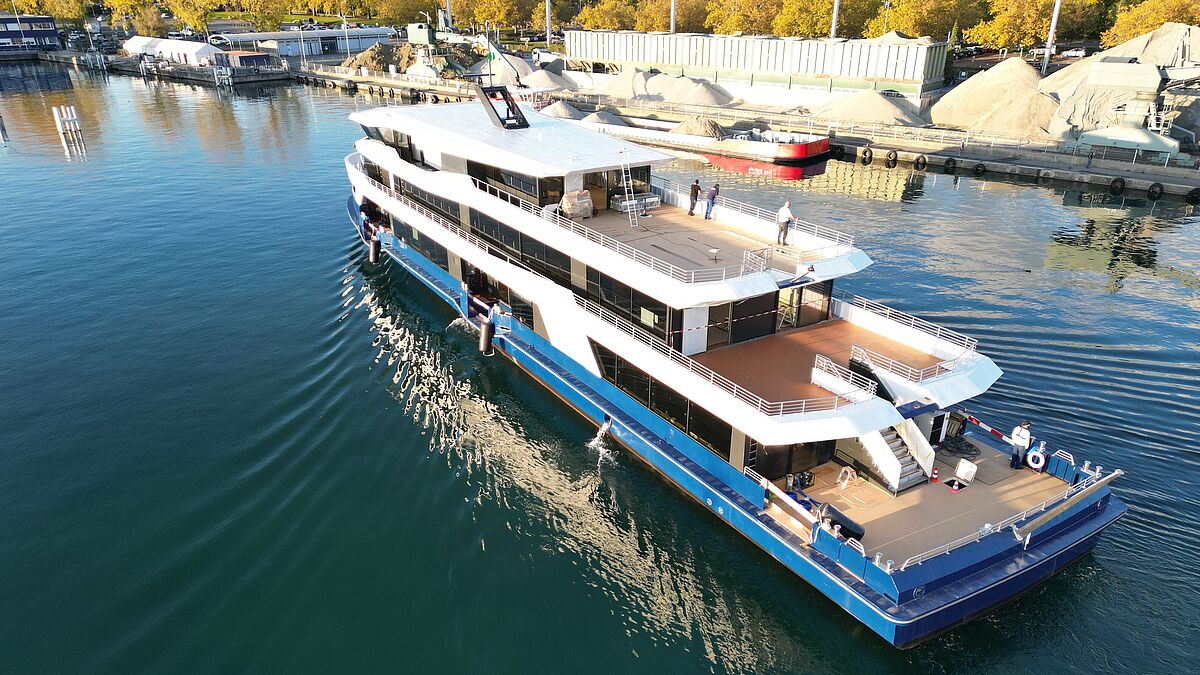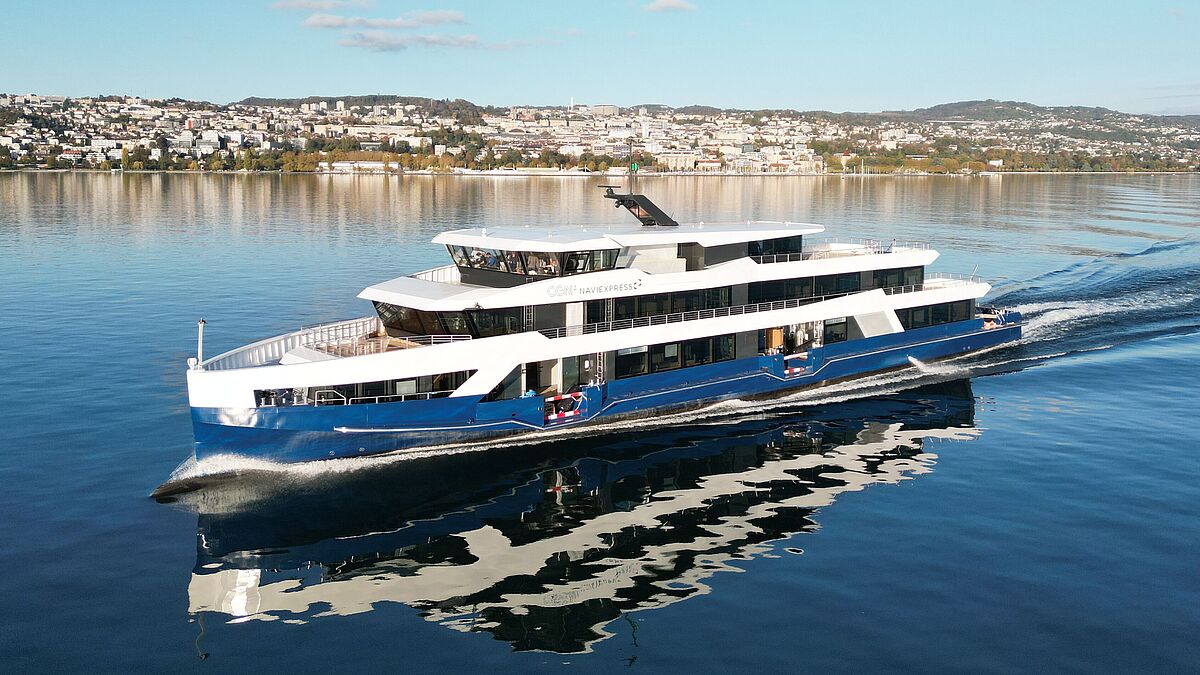![[Translate to Englisch:] [Translate to Englisch:]](/assets/_processed_/c/7/csm_Naviexpress_03_bfa5c73e34.jpg)
Naviexpress
New passenger ferries for Lake Geneva
Goals
The use of the new ships should massively increase the transport capacity between Lausanne in Switzerland and the two French towns of Evian-les-Bains and Thonon-les-Bains on the south side of Lake Geneva. This is thanks to the higher passenger capacity of the ships on the one hand; and on the other, to the massive expansion of daily connections. The expected shift of private transport from the road to public transport across Lake Geneva will reduce the CO2 footprint of an individual commuter by a factor of 30. This ground-breaking project will reduce environmental pollution in the region, thereby providing an important contribution to achieving climate protection goals.
Project description
At the beginning of 2020, the CGN SA (Compagnie générale de navigation sur le lac Léman SA) commissioned Shiptec AG to supply two new passenger ferries for Lake Geneva. In the meantime, the CGN’s specification was transferred over into a coordinated and fully developed design, which clarifies all of the technical details. Pre-production of the first hull sections started at the end of 2020, and assembly began directly in the CGN shipyard hall in Lausanne on Lake Geneva in the summer of 2021. The first vessel will be commissioned by the beginning of 2023 with subsequent handover to the customer in spring 2023. The second ship will be commissioned towards the end of 2023.
When developing the ships, great importance was attached to safety, passenger comfort and efficiency. To keep the weight of the ship low, the hull, structures and superstructures are made entirely of aluminium. Pre-production of the sections was carried out by Aluship Technology in Gdansk, Poland. The sections are transported to Basel using waterways and from there are moved to Lausanne on Lake Geneva by road.
The energy supply and drive system are based on the new BlueDriveEco system, which is a further development of the tried and tested Siship Ecoprop system from Siemens. Shiptec designed essential functionalities, particularly with regard to switching under load, from electric to diesel drives and vice versa. On the one hand, this hybrid concept is used for ‘peak shaving’ when there are high energy demands, and on the other means that the ship is powered by electric energy alone when near the bank and that the diesel drives are switched off. The same principle has already proven effective in the "MS Bürgenstock", a shuttle catamaran developed by Shiptec. The Wärtsilä 14 diesel engines, which correspond to the new Euro Stage V emission guidelines, were chosen. The drive is implemented with Voith Linear Jets. Bow and stern rudders are also used with Voith Inline Thrusters.
The capacity of the ships is 700 passengers with 600 comfortable seats on offer indoors. As the ships will be used by commuters, especially in the mornings and evenings, all of the seats have charging units for electronic devices and high-performance WiFi is available throughout the ship. The maximum speed is estimated to be 36 km/h (19.5 kn), with a nominal cruising speed of 33 km/h (17.8 kn).
Film von Philip Mathys
| Key data | |
|---|---|
| Client / Customer | CGN SA Lausanne |
| Propulsion drive | Series hybrid with FPT diesel generator sets and Siemens electric motors |
| Project volume | 57.0 million CHF (total price for 2 ships) |
| Year of completion | 2023 |
| Shiptec services | Development, planning, project management, construction, installation and commissioning |






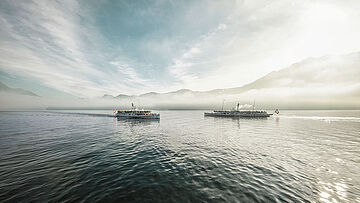
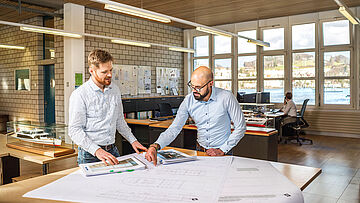

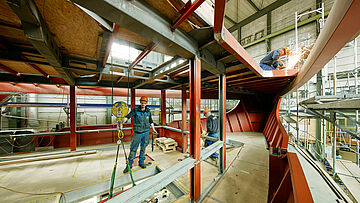
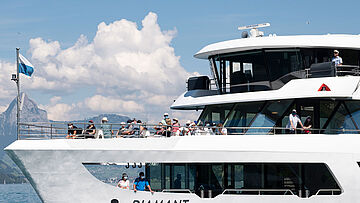
![[Translate to Englisch:] [Translate to Englisch:]](/assets/_processed_/c/e/csm_Metallbauarbeiten_03_e8db8f3bf5.jpg)
